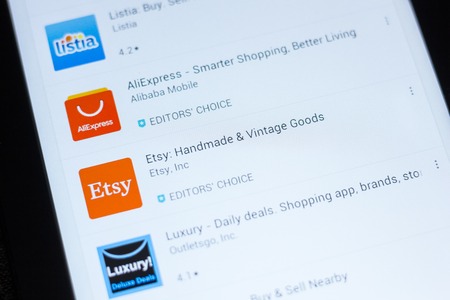Understanding the British Consumer Mindset
When it comes to crafting effective e-commerce product descriptions in the UK, understanding the unique mindset of British consumers is paramount. Shoppers in the UK are renowned for their discerning taste, appreciation for subtle wit, and an expectation of straightforwardness in communication. Striking a balance between creativity and clarity means more than just listing features—it’s about connecting with buyers on a cultural level. The British sense of humour, often dry or understated, can be woven into descriptions to evoke familiarity and trust without overstepping into the realm of exaggeration. Furthermore, UK shoppers value honesty and detail; they prefer transparency over hyperbole, expecting brands to deliver on their promises. By exploring these distinctive purchasing habits and sensibilities, e-commerce brands can tailor their copy to resonate authentically—making each product description not only informative but also engaging, relatable, and distinctly British.
2. Striking the Balance: Creativity Versus Clarity
When it comes to crafting product descriptions for UK e-commerce, the challenge lies in blending a dash of British wit and charm with clear, concise information that builds trust. Customers in the UK value transparency, yet they also appreciate brands that speak their language—literally and figuratively. To achieve this balance, brands must infuse personality into their copy without obscuring key product details or overstating features. This means using clever turns of phrase, cultural references, and a tone that reflects your brand’s ethos, all while ensuring essential facts are front and centre.
Injecting Local Flavour Without Losing Focus
The UK is known for its dry humour and understated confidence, both of which can be woven into product descriptions to engage shoppers. For example, playful nods to British weather or pop culture can make your listing memorable. However, these flourishes should never overshadow important information such as material composition, sizing details, or delivery options. Consider the following approach:
| Creative Element | Purpose | Clarity Safeguard |
|---|---|---|
| Local Idioms (“Perfect for a spot of afternoon tea”) | Adds relatability and warmth | Follow with specific use cases or features |
| Brand Personality (“Made for those who don’t take life too seriously”) | Differentiates your voice from competitors | Highlight technical specs immediately after |
| Humorous Asides (“Weatherproof enough for a week in Blackpool”) | Captures attention with a smile | Clarify certifications or protection ratings alongside |
The Art of Transparency: What to Always Include
No matter how witty or charming your copy, certain elements must remain non-negotiable. These include accurate measurements, material breakdowns, care instructions, pricing, and clear return policies. Shoppers are savvy—they expect both character and candour. A balanced description will entertain but never mislead, establishing your brand as both trustworthy and memorable.
Best Practice Tip
Edit ruthlessly: Once you’ve added your creative spin, double-check that nothing essential has been buried under clever wordplay. If in doubt, use bullet points to summarise key facts at the end of each description for absolute clarity.

3. Essential Elements of Effective UK Product Descriptions
When crafting product descriptions for the UK e-commerce market, it’s crucial to strike the right balance between creativity and clarity. British consumers value transparency and authenticity, making it essential to use plain English that resonates with local shoppers. Avoid jargon or overly technical language—keep sentences concise and easy to digest, allowing customers to quickly understand what you’re offering.
Highlighting Key Features in Plain English
Effective UK product descriptions go beyond a simple list of specifications. They paint a clear picture using familiar terms and relatable scenarios. For instance, instead of saying “ergonomic design,” describe how a chair “keeps you comfortable during long workdays.” This approach not only adds a human touch but also helps buyers visualise the benefits in their daily lives—a subtle nod to the British preference for practicality and straightforwardness.
Accurate Details Matter
British shoppers expect honesty and precision, so always provide accurate details regarding sizing, materials, delivery times, and returns policies. Use metric measurements (such as centimetres and kilograms) where possible, as these are standard in the UK. Being upfront about these specifics reduces confusion, builds trust, and demonstrates respect for your audience’s time.
Addressing Common Customer Queries
Anticipating and answering common questions is a hallmark of effective UK product copy. Consider local buying habits: Are next-day deliveries available? Is there free shipping to Scotland or Northern Ireland? What’s your policy on VAT or customs charges? Proactively addressing these topics within your descriptions not only streamlines the buying process but also positions your brand as attentive and customer-centric—key factors for building lasting loyalty in a competitive British marketplace.
SEO and Localisation: Making Your Products Discoverable
Successfully balancing creativity and clarity in UK e-commerce product descriptions means more than just clever copywriting. It’s crucial to optimise every listing for search engines, while also ensuring it resonates with British shoppers. The art lies in weaving British English keywords naturally into your descriptions and referencing local nuances that build trust and familiarity among your target audience.
The Importance of British English Keywords
Using the right keywords is the foundation of effective SEO, but it’s particularly important to consider regional variations in language. For example, “trainers” instead of “sneakers”, or “jumper” rather than “sweater”. This not only improves your ranking on UK-specific search results but also signals authenticity to your audience. Google increasingly favours content that matches user intent and local context, making keyword localisation a vital part of any UK e-commerce strategy.
Common American vs British E-Commerce Terms
| American English | British English |
|---|---|
| Sneakers | Trainers |
| Sweater | Jumper |
| Pants | Trousers |
| Color | Colour |
| Shipping | Delivery |
| Cart | Basket |
| Store | Shop |
Embedding Local References for Connection and Trust
Cultural references go a long way towards establishing rapport with a UK audience. Mentioning features like “rain-resistant” for outerwear, referencing popular destinations (think “perfect for a stroll along Brighton Pier”), or using quintessentially British expressions adds an extra layer of relevance to your product descriptions. These details help create an immediate sense of place and community, encouraging shoppers to see your brand as attuned to their daily lives.
Tips for Seamless Integration:
- Conduct keyword research with UK-specific tools: Use platforms like Google Keyword Planner set to the UK market to find high-traffic local terms.
- Include regional spellings and phrasing: Double-check spelling (“favourite”, not “favorite”) and swap out US idioms for British alternatives.
- Add contextually relevant examples: Describe how products suit UK lifestyles, from weather considerations to cultural events like Wimbledon or Glastonbury.
- Avoid overstuffing keywords: Ensure descriptions remain clear and readable, maintaining the delicate balance between optimisation and natural flow.
The intersection of SEO and localisation is where creative storytelling meets strategic precision. By thoughtfully integrating British English keywords and cultural references, you’ll increase discoverability on search engines while forging authentic connections with your UK customers—delivering on both clarity and creativity in every product description.
5. Building Trust Through Tone and Transparency
When crafting e-commerce product descriptions for the UK market, trust is paramount. British shoppers are known for their discerning eye and preference for straightforward, honest communication. Adopting an authentic, informative voice helps build rapport with potential buyers, setting your brand apart from faceless competitors. Rather than using exaggerated claims or overtly salesy language, it’s essential to keep things conversational yet professional—think of it as having a friendly chat with a knowledgeable shop assistant.
Clarity in Policies: A Confidence Booster
UK customers appreciate transparency, especially when it comes to guarantees, delivery specifics, and returns information. Clearly stating these details within your product descriptions not only answers common questions but also reassures visitors that they’re protected should anything go awry. For example, highlighting next-day delivery options or specifying precise dispatch times can tip the scales in your favour, particularly when British consumers value punctuality and reliability.
The Power of Plain English
Using plain English without unnecessary jargon or ambiguity demonstrates respect for your audience’s time and intelligence. The inclusion of direct statements like “30-day money-back guarantee” or “Free tracked shipping across the UK” provides immediate clarity, minimising hesitation during the buying process. This approach signals that you have nothing to hide—a trait highly valued in the UK’s competitive online landscape.
Encouraging Loyalty Through Honest Communication
Ultimately, combining creative flair with a transparent tone builds lasting relationships. When customers feel informed and confident in their purchase decisions, they’re more likely to return—and recommend your brand to others. By weaving trustworthiness throughout every description, you lay the groundwork for sustainable success in the ever-evolving world of UK e-commerce.
6. Showcasing Your Brand’s Unique Voice in a Crowded Market
Standing out in the UK’s bustling e-commerce scene goes far beyond simply listing product features—it’s about weaving your brand’s unique voice into every description, creating a memorable identity that resonates with local shoppers. Consistency is key: from witty one-liners to subtle British humour, your tone should reflect the personality and values that set your business apart. Begin by defining what makes your brand quintessentially you—is it traditional craftsmanship, sustainable sourcing, or cutting-edge innovation? Once established, embed these values into your copywriting, letting them shine through in every sentence.
Aligning with British Cultural Expectations
The British consumer appreciates authenticity, understatement, and a touch of dry wit. It’s important to avoid hyperbolic claims and instead opt for honest, relatable language that mirrors everyday conversation. This might mean using colloquialisms sparingly or referencing familiar cultural touchpoints. For example, a nod to the weather or a mention of iconic British rituals—like the afternoon tea break—can create instant rapport. Equally, clarity remains crucial; while clever turns of phrase can capture attention, clear benefits and practical details should never be sacrificed for style.
Expressing Values Through Storytelling
Storytelling is a powerful tool for connecting with UK audiences. Share the journey behind your products—whether it’s the heritage of a family-run business or the ethos driving your eco-friendly packaging choices. By weaving these narratives into product descriptions, you reinforce trust and invite shoppers to become part of your brand story.
Consistency Across All Touchpoints
To truly differentiate your offering, maintain a consistent brand voice across every channel—from your website to social media and email campaigns. This unified approach not only builds recognition but also fosters loyalty among British consumers who value dependability and transparency in their favourite brands.
In summary, carving out space in the UK e-commerce market requires more than creative flair; it demands clarity and an authentic brand voice that aligns with local sensibilities. By staying true to your values and expressing them consistently, you’ll ensure your products don’t just get noticed—they’re remembered.


